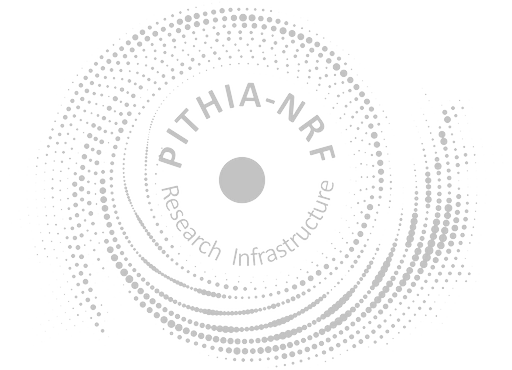<?xml version="1.0" encoding="UTF-8"?>
<DataCollection xmlns="https://metadata.pithia.eu/schemas/2.2" xmlns:xsi="http://www.w3.org/2001/XMLSchema-instance" xmlns:xlink="http://www.w3.org/1999/xlink" xmlns:gmd="http://www.isotc211.org/2005/gmd" xmlns:om="http://www.opengis.net/om/2.0" xsi:schemaLocation="https://metadata.pithia.eu/schemas/2.2 https://metadata.pithia.eu/schemas/2.2/pithia.xsd">
<!--
First report some required elements from ISO standard for Observation
-->
<om:phenomenonTime/><!-- DO NOT USE, we report phenomenon time only in Catalogs -->
<om:resultTime/> <!-- DO NOT USE, we report result time only in Catalogs -->
<om:procedure xlink:href="https://metadata.pithia.eu/resources/2.2/process/cnes/CompositeProcess_DTM2020-operational_2Dmaps"/>
<om:observedProperty/>
<om:featureOfInterest>
<FeatureOfInterest>
<namedRegion xlink:href="https://metadata.pithia.eu/ontology/2.2/featureOfInterest/Earth_Atmosphere_Thermosphere"/>
</FeatureOfInterest>
</om:featureOfInterest>
<om:result/> <!-- DO NOT USE, we use the CollectionResults below to specify URLs to provider) -->
<!--
Now our Data Collection elements next
-->
<identifier>
<PITHIA_Identifier>
<localID>DataCollection_DTM2020-operational_2Dmaps</localID>
<namespace>pithia</namespace>
<version>1</version>
<creationDate>2022-11-28T12:00:00Z</creationDate>
<lastModificationDate>2022-12-05T07:20:00Z</lastModificationDate>
</PITHIA_Identifier>
</identifier>
<name>DTM2020-operational: semi-empirical thermosphere model</name>
<description>
The Drag Temperature Model is the in-house developed semi-empirical model of the thermosphere. Its main
application is in orbit determination and prediction. It provides point-wise predictions of total mass density,
temperature, and partial densities of the main constituents (O2, N2, O, He). The solar driver is F10.7 and the
geomagnetic driver of the model is Kp. The backbone of the data used to fit the model coefficients are the
high-resolution and precision accelerometer-inferred densities of the GOCE, CHAMP and GRACE missions.
The DTM2020 model is available on Github (F90 code).
</description>
<type xlink:href="https://metadata.pithia.eu/ontology/2.2/computationType/EmpiricalModel"/>
<project xlink:href="https://metadata.pithia.eu/resources/2.2/project/cnes/Project_CNES_DTM"/>
<relatedParty>
<ResponsiblePartyInfo>
<role xlink:href="https://metadata.pithia.eu/ontology/2.2/relatedPartyRole/PointOfContact"/>
<party xlink:href="https://metadata.pithia.eu/resources/2.2/individual/cnes/Individual_CNES_Bruinsma"/>
</ResponsiblePartyInfo>
</relatedParty>
<relatedParty>
<ResponsiblePartyInfo>
<role xlink:href="https://metadata.pithia.eu/ontology/2.2/relatedPartyRole/DataProvider"/>
<party xlink:href="https://metadata.pithia.eu/resources/2.2/organisation/pithia/Organisation_CNES"/>
</ResponsiblePartyInfo>
</relatedParty>
<!--
No <collectionResults> are reported for DTM2020.
In our current approach, Data Collection reports access to only local node resources
and not PITHIA-managed ones. Because DTM2020 does not offer a landing page at CNES,
its Collection Results field is blank. DTM2020 is run via API or other ways provided by PITHIA eSC
-->
<dataLevel xlink:href="https://metadata.pithia.eu/ontology/2.2/dataLevel/L4"/>
<qualityAssessment>
<dataQualityFlag xlink:href="https://metadata.pithia.eu/ontology/2.2/dataQualityFlag/DQ4"/>
<metadataQualityFlag xlink:href="https://metadata.pithia.eu/ontology/2.2/metadataQualityFlag/MQ1"/>
<metadataQualityFlag xlink:href="https://metadata.pithia.eu/ontology/2.2/metadataQualityFlag/MQ2"/>
<metadataQualityFlag xlink:href="https://metadata.pithia.eu/ontology/2.2/metadataQualityFlag/MQ3"/>
<metadataQualityFlag xlink:href="https://metadata.pithia.eu/ontology/2.2/metadataQualityFlag/MQ4"/>
<metadataQualityFlag xlink:href="https://metadata.pithia.eu/ontology/2.2/metadataQualityFlag/MQ7"/>
<metadataQualityFlag xlink:href="https://metadata.pithia.eu/ontology/2.2/metadataQualityFlag/MQ8"/>
</qualityAssessment>
<permission xlink:href="https://metadata.pithia.eu/ontology/2.2/licence/CCBYNCSA"/>
</DataCollection>

